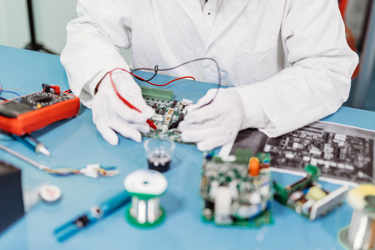Ceramic vs. Film: Choosing The Right Technology For Your Safety Capacitors

Safety capacitors are critical components designed to protect users and equipment from electrical hazards, even when failures occur. When selecting a safety capacitor, engineers typically choose between two dielectric materials: ceramic (MLCC) and film, each offering distinct advantages based on the application requirements.
Ceramic capacitors, often used in line-to-ground (Class Y) configurations, provide compact size and cost-effective manufacturing, making them ideal for space-limited, high-volume consumer electronics like chargers and appliances. Their low equivalent series resistance (ESR) and inductance (ESL) make them effective for high-frequency EMI suppression. However, ceramics usually have lower voltage ratings and may experience performance drift under environmental stresses, limiting their use in high-power or harsh conditions.
Film capacitors, conversely, are primarily employed in line-to-line (Class X) applications, where they must withstand high voltage surges and recover from dielectric breakdowns. They feature high voltage tolerance, self-healing capabilities, and excellent long-term stability, making them suitable for industrial equipment and power supplies. Their larger size and higher cost can be a trade-off compared to ceramics.
Choosing the right safety capacitor depends on understanding the device’s role, environmental conditions, size constraints, voltage requirements, and cost considerations. Ceramic capacitors are preferred for compact, cost-sensitive Class Y applications, while film capacitors are the choice for demanding Class X uses requiring durability and high-voltage performance. Knowles offers a broad portfolio to meet these varied needs, ensuring safety, reliability, and compliance.
Get unlimited access to:
Enter your credentials below to log in. Not yet a member of RF Globalnet? Subscribe today.
